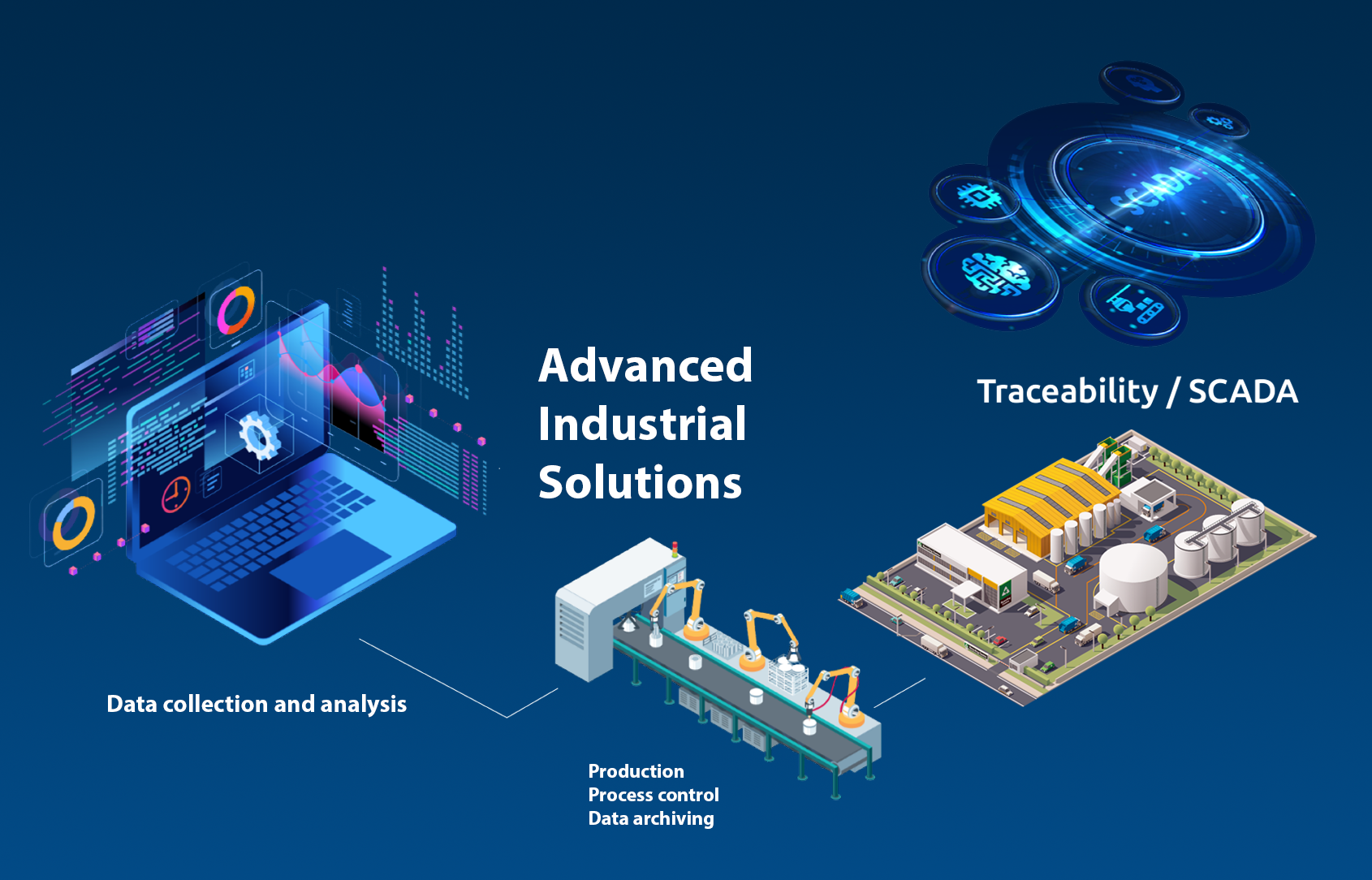
The term 'Traceability' in English means identifiability or 'the ability to track.' It is a system created for the needs of the client, for whom a database is built based on specific arrangements. The finished system allows for tracking the final product and its history during production, making it a key element of quality management and safety, which is of great importance to both manufacturers and customers. With traceability, it is possible to quickly locate and withdraw defective products from the market, helping to avoid potential financial losses and issues related to the company's image. In today's world, where consumer trust and regulatory compliance are priorities, an effective traceability system becomes an essential part of managing production processes.
Traceability involves tracking and controlling raw materials, semi-finished products, and finished products at every stage of their journey in the supply chain and production process. This includes not only recording the flow of raw materials but also detailed monitoring of production technologies, components, packaging, and transportation methods. As a result, it is possible to understand exactly where a given raw material comes from, how it has been processed, and where and how it has been used.
In practice, traceability is responsible for:
Based on the codes placed, such as 2D matrix or RFID technology, which contain a unique number for a specific piece of product, material, or batch. By scanning such a code during the production process at a given station or position in the line, the system identifies at which stage the product is. By linking the traceability system with the machine or line, we can control its flow at each production stage by reading its statuses, checking whether the previous process has been completed, and based on the scanned unique code, the database will allow the next stage to be executed.

During the production process, raw material goes through many stages, where steps are carried out to create the final product. The finished product consists of many components that are added during its realization. By building traceability for each station or process using PLC or PC and linking it to a database at a specific stage, we can create a system that checks whether the appropriate raw material or material is applied for that stage. How do we do this? By scanning the codes of the supplied products, the system checks based on unique numbers whether the correct raw material has been used. In this way, we can associate the required amount of raw materials at a given stage and control its dosing or the use of the appropriate component. After the process is completed, we can record to the database based on unique codes which material or raw material was used, as well as many other parameters such as product weight readings, torque wrench moments, production temperature, date and time, and which shift produced this product, etc.
During the production process, problems may arise at a given stage, such as a defective batch of components or raw materials. Detection of non-compliance may occur when the final product is already with the customer; the causes can be quality issues such as the use of inappropriate material, or the batch used during production had defects, or human error. Based on traceability, specifically the database, we can track the exact period of a given product batch and, if necessary, locate it at a specific customer using the unique code.
It allows for identifying the source of the elements used in production. For example, through backward tracking, it is possible to determine exactly which supplier a specific batch of raw material, such as steel, comes from. This is important in the case of quality issues, as it enables quick identification and isolation of potentially defective material.
It allows for monitoring who receives the finished product and how it will be handled further in the supply chain. An example could be determining whether the product will be sold wholesale or retail, as well as which customers it will go to. This enables a quick response if it turns out that the product needs to be recalled.
It focuses on monitoring the production processes that a semi-finished or finished product has undergone. This includes tracking the production operations that took place at a given stage, allowing for precise control and identification of any potential issues in the production process.

- Control of the production process: by building a robust system based on PLC controllers and PCs linked to an SQL database at each production stage.
- Increased product safety: Ability to respond quickly to issues, such as recalling defective batches from the market, minimizes risk to consumers.
- Compliance with regulations: In many industries, such as food and pharmaceuticals, traceability is required by law, which helps in complying with regulations and avoiding sanctions.
- Building customer trust: Transparency in supply chain management increases customer trust in the brand, which is crucial for maintaining long-term relationships.
- Optimization of processes: Through detailed analysis of traceability, it is possible to identify and eliminate the sources of problems in production, leading to improved efficiency and quality.
Traceability analysis is therefore not only a risk management tool but also a key element of quality improvement strategies and building trust in the market.

• Implementation of a comprehensive Traceability system, database, and associated hardware.
• Technical consulting during the preparation phase of the Traceability project.
• Flexibility during software startup, adapting the launch to the client's needs.
• Implementation of a database and hardware for the existing system.
• Guaranteed post-startup service for the system.